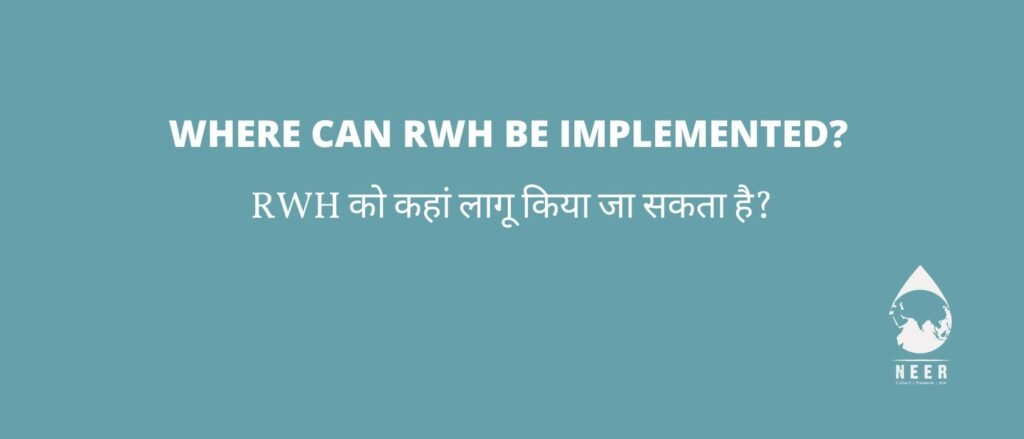
Where can RWH be Implemented?
RWH can be done in homes, apartments, societies, schools, institutions, commercial premises and any other space as long as there is a catchment area in the form of a roof or open space to capture the rain.
Domestic rainwater harvesting is a relatively simpler affair, where even a rain barrel can serve as a storage unit for rooftop RWH. Individual homes have successfully implemented this easy and eco-friendly method of augmenting household-level water availability. Farmers also have implemented RWH to transform a barren piece of land into a self-sustainable, lush green farm.
RWH only feasible for new buildings?
Existing buildings can also implement RWH by modifying the existing plumbing and making additions, if necessary.
What quantity of rainwater can be collected?
The rainwater harvested depends upon the catchment area, the rainfall pattern, and the drainage/ collection system used.
To understand the potential for rainwater harvesting, let’s take the example of a house in Delhi with a terrace area of 100 sqm. Taking the average annual rainfall in Delhi as 600 mm, and assuming 70% harvesting efficiency (as some rainwater will be lost due to evaporation, collection, etc.), we can calculate the amount of water harvested thus:
Volume of water harvested = 100 x 0.6 x 0.7 = 42,000 litres
This volume is more than twice the annual drinking water requirement of a 5-member family, whose average daily drinking water requirement is 10 LPCD.
What is the cost involved?
The cost will vary depending on the catchment area and the conveyance/ storage structures finalized. RWH can be installed at a very low cost in large plots where public buildings, schools & colleges are located, and this cost is negligible to the total construction cost if integrated with the building design.
If planned in an existing building, the cost is higher due to extra plumbing involved, but the returns are rich in terms of recurring benefits.
What are the various types of RWH?
Rainwater harvesting can be divided into 3 categories based on the types of usage, the area in which harvesting is carried out and the people involved.
- Storage or recharge: Based on the type of usage, structures can either be used to store the collected water for direct use or to recharge groundwater.
- Urban-rural difference: Urbanization has resulted in the shrinking of open spaces as well as unpaved areas. This has resulted not only in the flooding of cities but has also caused water scarcity due to groundwater depletion in general and saline water intrusion in coastal cities. While rural harvesting is mostly traditional and is carried out in surface storage bodies like rivers, tanks, ponds, lakes, etc., urban harvesting, due to lack of open space for capturing the runoff, is mostly in sub-soil storage as groundwater recharge.
- Rooftop & driveway harvesting: When we say rainwater harvesting, the first thing that comes to our mind is the terrace. This greatly restricts the scope of rainwater harvesting as a considerable amount of water that falls around the built-up area is let out of the building as runoff. Driveway runoff water should not be led into a sump for immediate use or to a source well, but it can very well be directed into recharge wells.
What are the characteristics of a good RWH system?
The RWH system must ensure that not a drop of rainwater falling within the premises is let into the sewerage or wasted as runoff. This can be achieved only if the method adopted within the premises satisfies the following criteria:
- Completeness: Both rooftop and driveway runoff water must be harvested.
- Apportioning of water: To avoid overload of any one system, leading to overflow and loss.
- Proper design: The volume of water likely to flow through and the nature of the soil in the area should be considered.
- Maintainability: The design should incorporate features allowing for periodic maintenance of the structure.